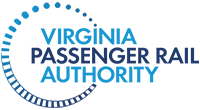Overview
Recreational Restrictions
Segments 1, 2, 3: VPRA acquired rights in Segments 1, 2, and 3 primarily to facilitate passenger rail travel, and the legal instruments providing VPRA those rights contain stringent restrictions against certain uses, including recreational uses.
For example, under the “Restrictive Covenants” section in each respective deed, hiking trails are explicitly prohibited. The applicable language is as follows: VPRA “acknowledges that the Passenger Rail Corridor has been historically used for railroad industrial operations and is being conveyed for use only for Passenger Rail Operations. Grantee, by acceptance of this Deed, hereby covenants that it, its successors, heirs, legal representatives or assigns shall not use the Passenger Rail Corridor for any purpose other than Passenger Rail Operations and that the Passenger Rail Corridor will not be used for the following (collectively, the “Use Restrictions”):…(c) any recreational purpose (recreational use shall be defined broadly to include, without limitation, use as a public park, hiking or biking trail, athletic fields or courts, or public gathering place).”
Accordingly, VPRA does not have the legal rights to unilaterally authorize the use of portions of Segments 1, 2, or 3 for recreational trails. Rather, proponents of trails over those Segments must obtain the approval of CSX (the “grantee” under the deeds) and also work through other legal processes and stakeholders such as DCR, VDOT, and other railroad stakeholders.
Manassas Line: The Manassas Line deeds contain similar restrictive covenants. Still, no such recreational trail can interfere with passenger or freight operations and must be implemented to ensure the safety of trail users and the safe and efficient operation of trains. Like Segments 1, 2, and 3, VPRA cannot unilaterally authorize recreational uses over the Manassas Line because NS has retained certain rights to conduct freight rail operations over the Manassas Line. Accordingly, proponents of trails over the Manassas Line must work with VPRA, NS, DCR, VDOT and other railroad stakeholders to advance any desired trails over the Manassas Line.
Locations of VPRA-Owned Rail Corridors
VPRA owns railroad corridors throughout Virginia and in portions of Washington, D.C., and North Carolina.
Segment 1:
This segment (also known as the RF&P corridor) consists of land running in parallel to CSX Transportation, Inc.’s (CSX) tracks. This property spans 144.6 miles from Washington, D.C. to Dinwiddie County, VA. New tracks will be constructed on much of this land to facilitate increased passenger rail operations between Richmond, VA, and Washington, D.C.
Segment 2:
Also known as the S-Line, this corridor was abandoned roughly 50 years ago – the corridor itself remains but without railroad tracks in most locations. It spans 75.1 miles from Dinwiddie County, VA to Ridgeway, NC. VPRA is working with North Carolina and the federal government to define the improvements required to establish a new, operational rail line in this corridor.
Segment 3:
This segment spans 164.22 miles from Dowell, VA to Clifton Forge, VA. This is an existing freight rail line operated by the Buckingham Branch Railroad Company, with some intercity passenger service over a western portion of the corridor.
Manassas Line:
VPRA recently purchased this line from Norfolk Southern Railway Company (NS). The Virginia Railway Express (VRE) operates its Manassas Line commuter rail service on these tracks. In the coming years, VPRA will support VRE in enhancing service, including the addition of evening and weekend service.
